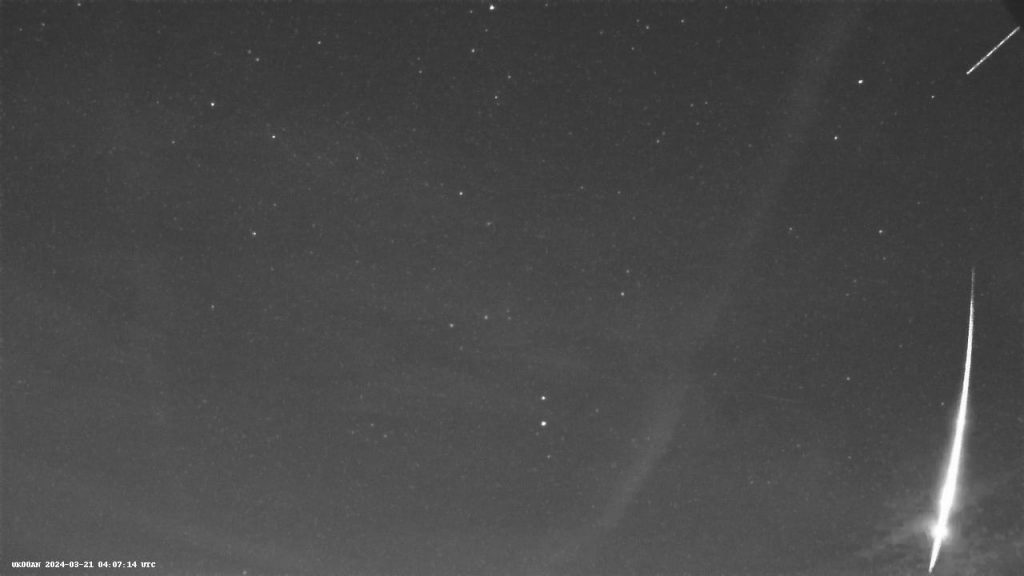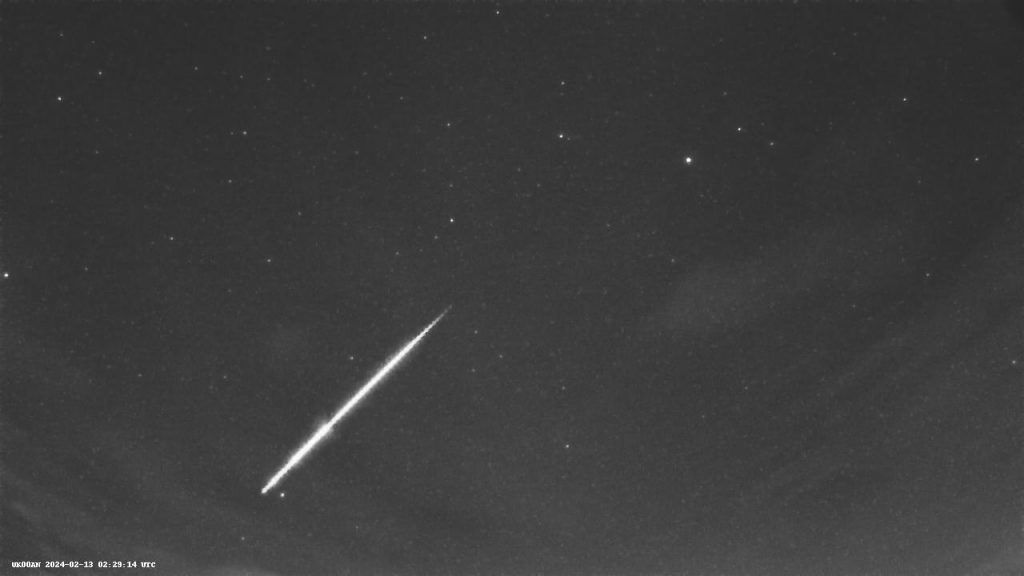May Emmanuel Meeting
May’s talk will be “SMILE! Revolutionising our views of the Sun-Earth connection”, delivered by Dr Jennifer Carter,
May’s talk will be “SMILE! Revolutionising our views of the Sun-Earth connection”, delivered by Dr Jennifer Carter,
This month our speaker is Professor Anne Green who will be discussing “The search for dark matter”.
The first fireball from the observatory for 2024 was captured by it’s UK Meteor Network camera kit UK00AN in the early hours 04:07 UTC on the 21st March.

A recent spectacular sporadic meteor captured by the observatory meteor camera UK00AN on 13th February 2024 at 02:29 UTC, (credit UK Meteor Network).

Our speaker for March, Professor Nial Tanvir will be anwering “What re-ionised the Universe?”
Our next meeting will be on 01/02/2024. Professor Frazer Pearce will be Placing the Timelords on the Kardashev scale.
Due to school holidays our January meeting takes place on the second Thursday in January (Thursday 11th January 2024)
The speaker is Prof Phil Sutton from the University of Lincoln. The talk is titled Interstellar Interlopers. Visitors are most welcome to attend the meeting. Entry is £3 Adults, £1 Students.
The April Plumtree meeting saw members show an image and talk about it for a few minutes. The images could be an image they had captured themselves or an image taken by others.
Ten members volunteered and the ten images are show below.
Nottingham Astronomical Society Member
A selection of Bryan’s drawings and photographs
Lunar Occultation of Mars on 8th December 2022. High magnification view using a Celestron C14 and ZWO ASI224 FOV: 2.15′ x 1.61’Resolution: 0.10″/pixelArea: 3.46 sq’Focal length: 7820mmFocal ratio: f/22.0
You must be logged in to post a comment.